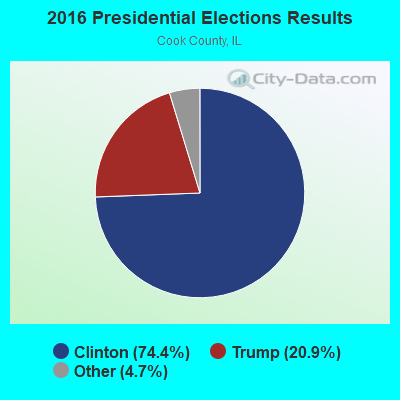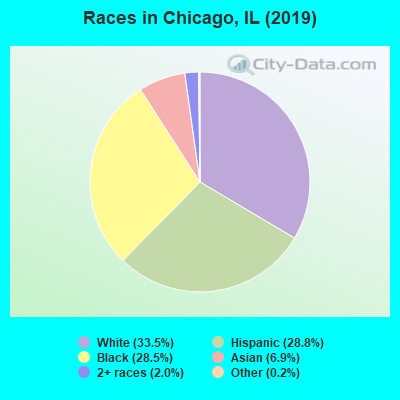| | Admin Messages : 56 Date d'inscription : 25/10/2018 |  Lun 8 Avr - 17:35 Admin écorchure brute équilibre asphalte les tours toucher les nuages goudrons atmosphère étouffer respirer espérer clans abandon South Side, Chicago, 2019. Lorem ipsum dolor sit amet, consectetur adipiscing elit, sed do eiusmod tempor incididunt ut labore et dolore magna aliqua. Ut enim ad minim veniam, quis nostrud exercitation ullamco laboris nisi ut aliquip ex ea commodo consequat. Duis aute irure dolor in reprehenderit in voluptate velit esse cillum dolore eu fugiat nulla pariatur. Excepteur sint occaecat cupidatat non proident, sunt in culpa qui officia deserunt mollit anim id est laborum. BlueChicago a fait le choix de se centrer son jeu sur un quartier du south side en particulier ; Roseland. BlueChicago a pris quelques libertés concernant la réalité du quartier afin de permettre une meilleure évolutions de jeu. |
| | Admin Messages : 56 Date d'inscription : 25/10/2018 |  Mer 7 Aoû - 16:42 Admin Détroit. En chiffre : - Elle avait déclaré faillite en juillet 2013, la pire de l’histoire pour une ville américaine, avec une dette de 18,5 milliards de dollars. - Detroit, ancienne capitale mondiale de l’automobile, a perdu plus de 60 % de sa population entre les années 50 (1,8 million d’habitants) et aujourd’hui (environ 600 000). - Le démographe rappelle que le taux de pauvreté de Detroit est toujours l’un des plus élevés des Etats-Unis, à 36 %. - Près d’un adulte sur deux est analphabète. - Le taux d’homicides est l'un des plus élevé du pays avec 40 meurtres pour 100 000 habitants à Detroit, plus qu'à Chicago. - Les Blancs sont massivement partis s’installer en banlieue, la ville est aujourd’hui à plus de 80 % afro-américaine. - Avec 130 millions de dollars promis en 2018, la quasi-totalité des investissements se concentre dans une zone de 18 kilomètres carrés, entre Downtown et Midtown, pour une ville qui s’étend sur 370 km². Qu'est-ce que cela implique concrètement ? - Fini le ramassage d’ordures, fini l’éclairage public dans la moitié des rues de la ville, écoles qui ferment, services publics proches du néant. - Une ville aux allures post-apocalyptiques : quartiers entiers de maisons abandonnées, pelouses devenues friches, arbres qui poussent au milieu du salon, commerces éventrés, incinérés, fermés depuis des lustres, faisans et renards qui se promènent à la nuit tombée. - Ce sont également de larges avenues vides, héritages d’une ville dimensionnée pour 2 millions d’habitants motorisés, utopie vrombissante depuis longtemps oubliée. - Une habitante témoigne : « Je dis toujours que le futur va ressembler à Detroit : c’est ça, le revers du capitalisme américain. Des autoroutes vides, des usines vides, des maisons vides, des fermes urbaines et un certain esprit de résilience. » La Renaissance ? - Les quartiers de Downtown et Midtown sont les plus favorisés de la ville puisque ce sont dans ces quartiers qu'investissent les entreprises et l'immobilier. - D'après un habitant, « dès qu’on sort de Downtown, il ne reste que du drame. » - La population de sans-abri baisse depuis trois ans. - L’éclairage public a été réparé à coup d’investissements massifs et la criminalité est en baisse, avec un nombre d’homicides au plus bas depuis le début des années 60. - Si le taux de chômage a beaucoup baissé, le taux de participation au marché du travail y reste le plus faible du pays, à 53,4 %. - Si les milliards investis ont permis de créer des emplois, 70 % des personnes qui travaillent à Detroit vivent en dehors de la ville. - Et d'autres habitants témoignent : « En dehors du centre, c’est le no man’s land », « C’est un îlot de prospérité au milieu d’un océan de misère », et d'autres s’agace du « storytelling des politiques et des investisseurs du centre-ville, qui vivent dans une fiction. » Sources : HANNE Isabelle Hanne, 2018. « Detroit : cash-misère », Libération, 10 septembre 2018 à 19:36, https://www.liberation.fr/planete/2018/09/10/detroit-cash-misere_1677808 (consulté le 07/08/2018) |
| | Admin Messages : 56 Date d'inscription : 25/10/2018 |  Sam 12 Oct - 16:41 Admin Chicago At a Glance Welcome to Chicago, the third largest city in the United States, with a population of nearly three million people. Chicago is home to...2,716,450 residents 50 wards 77 community areas 100 neighborhoods 8 major league sports teams, including two MLB teams Chicago is a celebrated melting pot...36 annual parades 40 annual film festivals 74 music festivals 200 professional dance companies More than 200 theaters 250 live music venues 40+ annual film festivals 20+ film and filmmaker nonprofit organizations 12+ art house and independent cinemas 13,000 film and TV production jobs 400+ individual film and TV productions Chicago is ...a city in a garden. a biking city a foodie destination A City for Sports Fans A Melting Pot of Arts & Culture The city's overall crime rate, especially the violent crime rate, is higher than the US average. Chicago was responsible for nearly half of 2016's increase in homicides in the US, though the nation's crime rates remain near historic lows.[5][6][7] The reasons for the higher numbers in Chicago remain unclear. An article in The Atlantic detailed how researchers and analysts had come to no real consensus on the cause for the violence.[8] Crime in Chicago has been tracked by the Chicago Police Department's Bureau of Records since the beginning of the 20th century. The city's overall crime rate, especially the violent crime rate, is higher than the US average. Chicago was responsible for nearly half of 2016's increase in homicides in the US, though the nation's crime rates remain near historic lows.[5][6][7] The reasons for the higher numbers in Chicago remain unclear. An article in The Atlantic detailed how researchers and analysts had come to no real consensus on the cause for the violence.[8] Median real estate property taxes paid for housing units with mortgages in 2016: $3,833 (1.5%) Median real estate property taxes paid for housing units with no mortgage in 2016: $3,248 (1.5%) Daytime population change due to commuting: +190,451 (+7.0%) Workers who live and work in this city: 992,508 (75.2%)    https://upload.wikimedia.org/wikipedia/commons/2/26/Redistricting_suggestion_map.png Chicago saw a major rise in violent crime starting in the late 1960s. Murders in the city peaked in 1974, with 970 murders when the city's population was over three million, resulting in a murder rate of around 29 per 100,000, and again in 1992, with 943 murders when the city had fewer than three million people, resulting in a murder rate of 34 murders per 100,000 citizens. After 1992, the murder count steadily decreased to 415 murders by the mid 2000s, a reduction of over 50 percent. In 2018, there were 561 murders.[9][10] Chicago experienced a major rise in violent crime starting in the late 1960s,[11] a decline in overall crime in the 2000s,[12] and then a rise in murders in 2016.[13] Murder, rape, and robbery are common violent crimes in the city, and the occurrences of such incidents are documented by the Chicago Police Department and indexed in annual crime reports.[14] Chicago street gangsChicago is considered the most gang-infested city in the United States, with a population of over 100,000 active members from nearly 60 factions.[78][79] Gang warfare and retaliation is common in Chicago. Gangs were responsible for 61% of the homicides in Chicago in 2011.[22] Former Chicago Police Superintendent Garry McCarthy blames Chicago's gang culture for its high rates of homicide and other violent crime, stating "It's very frustrating to know that it's like 7% of the population causes 80% of the violent crime...The gangs here are traditional gangs that are generational, if you will. The grandfather was a gang member, the father's a gang member, and the kid right now is going to be a gang member."[80] Mayor Rahm Emanuel disbanded the Chicago Police Department's anti-gang unit in 2012 in order to focus on beat patrols, which he said would have a more long-term solution to violence than anti-gang units.[81][82] As many as 70 active and inactive Chicago street gangs with 753 factions have been identified.[83][84] sources http://www.city-data.com/city/Chicago-Illinois.html https://en.wikipedia.org/wiki/South_Chicago,_Chicago https://en.wikipedia.org/wiki/Crime_in_Chicago |
| | Admin Messages : 56 Date d'inscription : 25/10/2018 |  Sam 12 Oct - 17:15 Admin The South Side is an area of the city of Chicago. It is the largest of the three Sides of the city that radiate from downtown—the others being the North Side and the West Side (while there is no East Side, because Lake Michigan runs along the city's eastern border, there is an East Side community area on the South Side, in the far southeastern section of the city). The South Side is sometimes referred to as South Chicago, although that name can also refer to a specific community area on the South Side. Much of the South Side came from the city's annexation of townships such as Hyde Park.[1] The city's "sides" have historically been divided by the Chicago River and its branches.[2][3] The South Side of Chicago was originally defined as all of the city south of the main branch of the Chicago River,[4][5] but it now excludes the Loop.[3] The South Side has a varied ethnic composition. It has great disparity in income and other demographic measures.[6] Although it has a reputation for high levels of crime,[7][8] the reality is much more varied. The South Side ranges from affluent to middle class to poor, just like other sections of large cities.[9][10] South Side neighborhoods such as Armour Square, Back of the Yards, Bridgeport, and Pullman host more blue collar and middle-class residents, while Hyde Park, the Jackson Park Highlands District, Kenwood, Beverly, Mount Greenwood, and west Morgan Park feature affluent and upper-middle class residents.[11] The South Side boasts a broad array of cultural and social offerings, such as professional sports teams, landmark buildings, museums, educational institutions, medical institutions, beaches, and major parts of Chicago's parks system. The South Side is served by numerous bus and 'L' trains via the Chicago Transit Authority and several Metra rail commuter lines.[12] It has several interstate and national highways.[13] https://en.wikipedia.org/wiki/South_Side,_Chicago The South Side has a population of 752,496, of which over 93% are African American.[43] Some census tracts (4904 in Roseland, 7106 in Auburn Gresham) are 99% black.[44] The South Side covers over 50% of the city's land area alone. It has a higher ratio of single-family homes and larger sections zoned for industry than the North or West Sides.[citation needed] Hyde Park is home to the University of Chicago, as well as the South Side's largest Jewish population, centered on Chicago's oldest synagogue, the Chicago Landmark KAM Isaiah Israel.[45] The Southwest Side's ethnic makeup also includes the largest concentration of Górals, (Carpathian highlanders) outside of Europe; it is the location of the Polish Highlanders Alliance of North America.[46] A large Mexican-American population resides in Little Village (South Lawndale) and areas south of 99th Street.[47] Private sector redevelopment is occurring rapidly.[clarification needed][citation needed] Neighborhood rehabilitation (and, in some cases, gentrification) can also be seen in parts of Washington Park, Woodlawn ( #42) and Bronzeville, as well as in Bridgeport and McKinley Park. Historic Pullman's redevelopment is another example of a work in progress. Chinatown is located on the South Side and has seen a surge in growth. It has become an increasingly popular destination for both tourists and locals alike and is a cornerstone of the city's Chinese community.[citation needed] The South Side offers many outdoor amenities, such as miles of public lakefront parks and beaches, as it borders Lake Michigan on its eastern side.[citation needed] |
| | | |
| | Permission de ce forum: | Vous ne pouvez pas répondre aux sujets dans ce forum
| |
| |
| |
